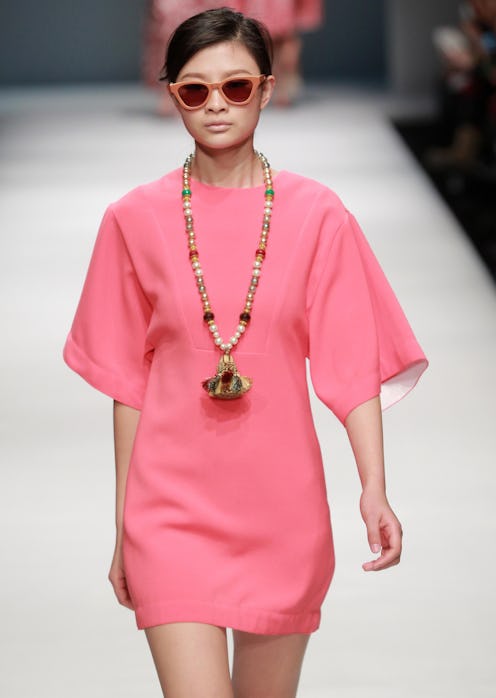Fashion
Ever Wondered About The Color Pink?
My big sister is pregnant, and mere weeks away from the sex-determining ultrasound. She’ll be thrilled with a healthy baby of either gender, of course, but a part of me thinks she’s hoping for a girl simply because the frilly dresses are so stinking cute. And since I’m planning on being the best aunt of all time, I’ve been eyeing up these adorable ensembles, too. But I keep coming back to the same question: Why is everything so pink ?
It’s no secret that this is the color most associated with little girls (and the occasional frat boy), but this wasn’t always the case. Because it’s easy to bleach, white was actually the hue of choice for babies of both genders until the mid-19th century, according to the Smithsonian.com. And even then, the pastels that hit the newborn-fashion scene were considered pretty gender neutral.
That all changed around 1918 when an article in the trade publication Earnshaw’s Infants’ Department set a new rule: Pink is for boys because it’s the more “decided and stronger” color, and blue, being the “delicate and dainty” option of the Virgin Mary, is for girls. Major department stores took this assessment and ran with it — until the 1940s, that is. At this time, manufacturers decided to spice things up by flipping this arbitrary guideline on its head. And, save for the more androgynous baby clothing preferred during the feminist-influenced 60s, the gendered color palette we know today has pretty much stuck.
But as far as pink goes, that’s just the beginning. It’s a color with a storied history, and some pretty quirky trivia behind it. Thus presenting: The 10 things you probably don’t know about the color pink:
1. Hitler Helped Solidify It As "Feminine"
The Nazis targeted homosexuals during World War II, forcing them to wear pink triangles on their concentration camp uniforms. Because of this, the same image is used today as a symbol of gay pride.
2. Except In Japan, Where It's Considered Masculine
The pink blossoms of the cherry tree are said to represent the souls of fallen Samurai here.
3. Men Who Wear It Make More Money
About $1600 more per year than the colleagues who opt for blue and white button-downs, according to a 2012 study commissioned by Cotton USA. They also boast more advanced degrees and more confidence.
4. But It's Not Good For A Date
Women are turned off by men in pink, researchers say. Hot tip for the fellas: Opt for grey.
5. Pink Has A Tranquilizing Effect
It’s the reason prisons are often painted shades of Pepto Bismol. And sports teams paint the locker rooms of opposing teams a rosy shade, too.
6. The Color Is Actually Counter-Productive When It Comes To Raising Money For Breast Cancer Research
According to Harvard experts, because the color is now considered so “feminine,” the association of the pink ribbon with breast cancer makes women feel even more susceptible to the disease than they are, and this sets off strong denial mechanisms that make us less likely to donate.
7. It Was A Late-Comer For Crayola
The company didn’t make its first pink crayon until 1949. (Red, orange, yellow, green, blue, violet, black and brown had been around since 1903.)
8. It Makes Us Crave Sugar
Your doughnut likely tastes better when served on a pink plate.
9. It Was Once "Shocking"
Designer Elsa Schiaparelli is credited with introducting hot pink, originally called “shocking” pink, to western fashion in 1947. She described it as “life-giving, like all the light and the birds and the fish in the world put together.”
10. You're More Likely To Wear It At Certain Times Of The Month
Women are biologically wired, if only subconsciously, to seek out mates when we’re at our most fertile. And since men, researchers say, find women in red and pink more attractive because these colors mimic the reddish flush that occurs during arousal, we’re more likely to sport a pink sweater while ovulating. And voila! You’ll never look at pink the same again.
Images: Getty; Giphy
